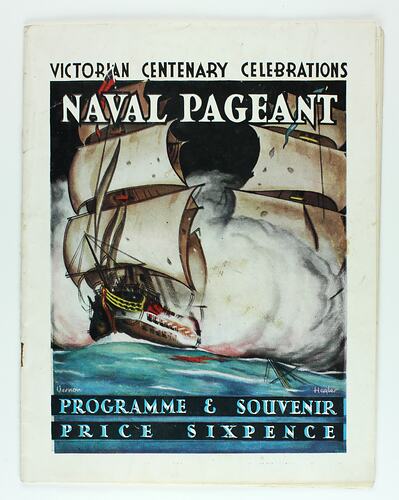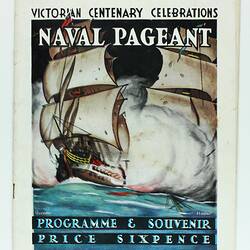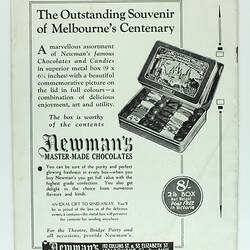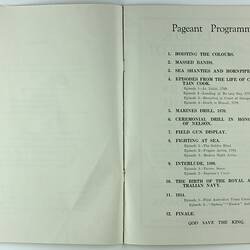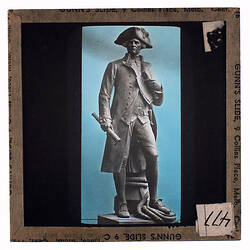Summary
Programme which cost 6 pence and was produced for the Naval Pageant held at the Melbourne Show Ground, 31 October - 3 November 1934, to celebrate Victoria's centenary. It was printed by Ramsay Publishing Pty Ltd.
The Naval Pageant was arranged as part of the Navy's contribution to the Victorian Centenary Celebrations. It was produced and acted by officers and men from the Navy Office, Flinders Naval Depot, H.M.A.S. Squadron, R.A.N.R. Depot, Williamstown, and R.A.N.R. Depot, Port Melbourne. Included were songs and marches, episodes from the life of Captain Cook, drill in honour of Nelson, Drake, Neptune's Court, and episodes from 1914.
This was essentially family entertainment - advertisements in this programme are for ice creams, chocolates and engagement rings. A note about the episode in Cook's life in Tahiti reads 'The dresses worn by Tahitian dancing girls at this period were not considered suitable for the pageant, and historical accuracy has been sacrificed for attractiveness in choosing the raffia skirts of Hawaii.'
Physical Description
Quarto, illustrated, stapled in original colour. Front cover printed in green and gold features printed image of two sailing ships firing canons. A small ship appears to be sinking in the foreground. The sea is printed in bright blue and green. The colour printing registration is slightly our of line, resulting in a blurry image. Extensive black and white photographs and printed text within.
Significance
In 1934, as Melbourne planned to celebrate the centenary of European settlement, it seemed to some that there was little to celebrate. The financial strains of the depression, unemployment and the scandal of the city's slums all undercut claims of unbridled progress.
Perhaps because of such troubles, the organisers of the centenary celebrations tried doubly hard to be positive. The themes of the celebrations were conservative, reflecting the desire of some Melburnians for security in troubled times. The widely promoted image of the 'Garden City' and 'Queen City of the South' emphasised the idea of Melbourne as a very British city. A visit by the Duke of Gloucester, son of George V, the ageing king, provided a reassuring strengthening of Melbourne's imperial connections.
The presented view of Melbourne's history stressed the 'myth of the pioneer', embodied in people such as John Batman. Elevated to heroic status, he was reinvented as courageous pioneers whose life exemplified the rewards of self-improvement. Such a portrayal ignored Batman's dubious 'treaty' with local Aborigines and the less savoury details of his personal life.
Melbourne's indigenous people were excluded from this triumphant view of Melbourne's past. The centenary celebrations now seem dated, but the image of Melbourne as a conservative city largely influenced by Britain has been more enduring.
More Information
-
Collection Names
-
Collecting Areas
-
Acquisition Information
Purchase from Australian Book Auctions, Oct 2007
-
Publisher
Ramsay Publishing Pty. Ltd., Melbourne, Greater Melbourne, Victoria, Australia, 1934
-
Person Named
-
Place & Date of Event
Naval Pageant, Melbourne, Victoria, Australia, 31 Oct 1934 - 03 Nov 1934
-
Inscriptions
Front cover, printed: VICTORIAN CENTENARY CELEBRATIONS / NAVAL PAGEANT / PROGRAMME & SOUVENIR / PRICE SIXPENCE Back cover, printed: The Outstanding Souvenir of Melbourne's Centenary / A marvellous assortment of Newman's famous Chocolates and Candies ...
-
Classification
-
Category
-
Discipline
-
Type of item
-
Overall Dimensions
187 mm (Width), 242 mm (Height)
-
Keywords
Celebrations, Victoria Centenary, 1934-1935, Civic Mementoes, Souvenirs
